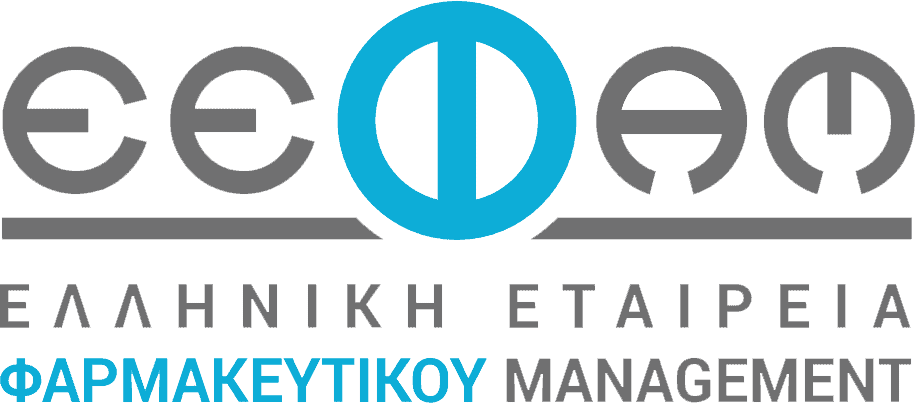Blog
Blog
A new future of work: The race to deploy AI and raise skills in Europe and beyond

At a glance
Amid tightening labor markets and a slowdown in productivity growth, Europe and the United States face shifts in labor demand, spurred by AI and automation. Our updated modeling of the future of work finds that demand for workers in STEM-related, healthcare, and other high-skill professions would rise, while demand for occupations such as office workers, production workers, and customer service representatives would decline. By 2030, in a midpoint adoption scenario, up to 30 percent of current hours worked could be automated, accelerated by generative AI (gen AI). Efforts to achieve net-zero emissions, an aging workforce, and growth in e-commerce, as well as infrastructure and technology spending and overall economic growth, could also shift employment demand.
By 2030, Europe could require up to 12 million occupational transitions, double the prepandemic pace. In the United States, required transitions could reach almost 12 million, in line with the prepandemic norm. Both regions navigated even higher levels of labor market shifts at the height of the COVID-19 period, suggesting that they can handle this scale of future job transitions. The pace of occupational change is broadly similar among countries in Europe, although the specific mix reflects their economic variations.
Businesses will need a major skills upgrade. Demand for technological and social and emotional skills could rise as demand for physical and manual and higher cognitive skills stabilizes. Surveyed executives in Europe and the United States expressed a need not only for advanced IT and data analytics but also for critical thinking, creativity, and teaching and training—skills they report as currently being in short supply. Companies plan to focus on retraining workers, more than hiring or subcontracting, to meet skill needs.
Workers with lower wages face challenges of redeployment as demand reweights toward occupations with higher wages in both Europe and the United States. Occupations with lower wages are likely to see reductions in demand, and workers will need to acquire new skills to transition to better-paying work. If that doesn’t happen, there is a risk of a more polarized labor market, with more higher-wage jobs than workers and too many workers for existing lower-wage jobs.
Choices made today could revive productivity growth while creating better societal outcomes. Embracing the path of accelerated technology adoption with proactive worker redeployment could help Europe achieve an annual productivity growth rate of up to 3 percent through 2030. However, slow adoption would limit that to 0.3 percent, closer to today’s level of productivity growth in Western Europe. Slow worker redeployment would leave millions unable to participate productively in the future of work.

Demand will change for a range of occupations through 2030, including growth in STEM- and healthcare-related occupations, among others
This report focuses on labor markets in nine major economies in the European Union along with the United Kingdom, in comparison with the United States. Technology, including most recently the rise of gen AI, along with other factors, will spur changes in the pattern of labor demand through 2030. Our study, which uses an updated version of the McKinsey Global Institute future of work model, seeks to quantify the occupational transitions that will be required and the changing nature of demand for different types of jobs and skills.
Our analysis finds that demand for occupations such as health professionals and other STEM-related professionals would grow by 17 to 30 percent between 2022 and 2030, (Exhibit 1).

Up to 30 percent of hours worked could be automated by 2030, boosted by gen AI, leading to millions of required occupational transitions
By 2030, our analysis finds that about 27 percent of current hours worked in Europe and 30 percent of hours worked in the United States could be automated, accelerated by gen AI. Our model suggests that roughly 20 percent of hours worked could still be automated even without gen AI, implying a significant acceleration.
These trends will play out in labor markets in the form of workers needing to change occupations. By 2030, under the faster adoption scenario we modeled, Europe could require up to 12.0 million occupational transitions, affecting 6.5 percent of current employment. That is double the prepandemic pace (Exhibit 2). Under a slower scenario we modeled for Europe, the number of occupational transitions needed would amount to 8.5 million, affecting 4.6 percent of current employment. In the United States, required transitions could reach almost 12.0 million, affecting 7.5 percent of current employment. Unlike Europe, this magnitude of transitions is broadly in line with the prepandemic norm.


Businesses will need a major skills upgrade
The occupational transitions noted above herald substantial shifts in workforce skills in a future in which automation and AI are integrated into the workplace (Exhibit 3). Workers use multiple skills to perform a given task, but for the purposes of our quantification, we identified the predominant skill used.

Demand for social and emotional skills could rise by 11 percent in Europe and by 14 percent in the United States. Underlying this increase is higher demand for roles requiring interpersonal empathy and leadership skills. These skills are crucial in healthcare and managerial roles in an evolving economy that demands greater adaptability and flexibility.
Conversely, demand for work in which basic cognitive skills predominate is expected to decline by 14 percent. Basic cognitive skills are required primarily in office support or customer service roles, which are highly susceptible to being automated by AI. Among work characterized by these basic cognitive skills experiencing significant drops in demand are basic data processing and literacy, numeracy, and communication.
Demand for work in which higher cognitive skills predominate could also decline slightly, according to our analysis. While creativity is expected to remain highly sought after, with a potential increase of 12 percent by 2030, work activities characterized by other advanced cognitive skills such as advanced literacy and writing, along with quantitative and statistical skills, could decline by 19 percent.
Demand for physical and manual skills, on the other hand, could remain roughly level with the present. These skills remain the largest share of workforce skills, representing about 30 percent of total hours worked in 2022. Growth in demand for these skills between 2022 and 2030 could come from the build-out of infrastructure and higher investment in low-emissions sectors, while declines would be in line with continued automation in production work.
Business executives report skills shortages today and expect them to worsen
A survey we conducted of C-suite executives in five countries shows that companies are already grappling with skills challenges, including a skills mismatch, particularly in technological, higher cognitive, and social and emotional skills: about one-third of the more than 1,100 respondents report a shortfall in these critical areas. At the same time, a notable number of executives say they have enough employees with basic cognitive skills and, to a lesser extent, physical and manual skills.
Within technological skills, companies in our survey reported that their most significant shortages are in advanced IT skills and programming, advanced data analysis, and mathematical skills. Among higher cognitive skills, significant shortfalls are seen in critical thinking and problem structuring and in complex information processing. About 40 percent of the executives surveyed pointed to a shortage of workers with these skills, which are needed for working alongside new technologies (Exhibit 4).


Companies see retraining as key to acquiring needed skills and adapting to the new work landscape
Surveyed executives expect significant changes to their workforce skill levels and worry about not finding the right skills by 2030. More than one in four survey respondents said that failing to capture the needed skills could directly harm financial performance and indirectly impede their efforts to leverage the value from AI.
To acquire the skills they need, companies have three main options: retraining, hiring, and contracting workers. Our survey suggests that executives are looking at all three options, with retraining the most widely reported tactic planned to address the skills mismatch: on average, out of companies that mentioned retraining as one of their tactics to address skills mismatch, executives said they would retrain 32 percent of their workforce. The scale of retraining needs varies in degree. For example, respondents in the automotive industry expect 36 percent of their workforce to be retrained, compared with 28 percent in the financial services industry. Out of those who have mentioned hiring or contracting as their tactics to address the skills mismatch, executives surveyed said they would hire an average of 23 percent of their workforce and contract an average of 18 percent.
Occupational transitions will affect high-, medium-, and low-wage workers differently
All ten European countries we examined for this report may see increasing demand for top-earning occupations. By contrast, workers in the two lowest-wage-bracket occupations could be three to five times more likely to have to change occupations compared to the top wage earners, our analysis finds. The disparity is much higher in the United States, where workers in the two lowest-wage-bracket occupations are up to 14 times more likely to face occupational shifts than the highest earners. In Europe, the middle-wage population could be twice as affected by occupational transitions as the same population in United States, representing 7.3 percent of the working population who might face occupational transitions.
Enhancing human capital at the same time as deploying the technology rapidly could boost annual productivity growth
We have attempted to quantify at a high level the potential effects of different stances to AI deployment on productivity in Europe. Our analysis considers two dimensions. The first is the adoption rate of AI and automation technologies. We consider the faster scenario and the late scenario for technology adoption. Faster adoption would unlock greater productivity growth potential but also, potentially, more short-term labor disruption than the late scenario.
The second dimension we consider is the level of automated worker time that is redeployed into the economy. This represents the ability to redeploy the time gained by automation and productivity gains (for example, new tasks and job creation). This could vary depending on the success of worker training programs and strategies to match demand and supply in labor markets.
We based our analysis on two potential scenarios: either all displaced workers would be able to fully rejoin the economy at a similar productivity level as in 2022 or only some 80 percent of the automated workers’ time will be redeployed into the economy.
Exhibit 5 illustrates the various outcomes in terms of annual productivity growth rate. The top-right quadrant illustrates the highest economy-wide productivity, with an annual productivity growth rate of up to 3.1 percent. It requires fast adoption of technologies as well as full redeployment of displaced workers. The top-left quadrant also demonstrates technology adoption on a fast trajectory and shows a relatively high productivity growth rate (up to 2.5 percent). However, about 6.0 percent of total hours worked (equivalent to 10.2 million people not working) would not be redeployed in the economy. Finally, the two bottom quadrants depict the failure to adopt AI and automation, leading to limited productivity gains and translating into limited labor market disruptions.


Four priorities for companies
The adoption of automation technologies will be decisive in protecting businesses’ competitive advantage in an automation and AI era. To ensure successful deployment at a company level, business leaders can embrace four priorities.
Understand the potential. Leaders need to understand the potential of these technologies, notably including how AI and gen AI can augment and automate work. This includes estimating both the total capacity that these technologies could free up and their impact on role composition and skills requirements. Understanding this allows business leaders to frame their end-to-end strategy and adoption goals with regard to these technologies.
Plan a strategic workforce shift. Once they understand the potential of automation technologies, leaders need to plan the company’s shift toward readiness for the automation and AI era. This requires sizing the workforce and skill needs, based on strategically identified use cases, to assess the potential future talent gap. From this analysis will flow details about the extent of recruitment of new talent, upskilling, or reskilling of the current workforce that is needed, as well as where to redeploy freed capacity to more value-added tasks.
Prioritize people development. To ensure that the right talent is on hand to sustain the company strategy during all transformation phases, leaders could consider strengthening their capabilities to identify, attract, and recruit future AI and gen AI leaders in a tight market. They will also likely need to accelerate the building of AI and gen AI capabilities in the workforce. Nontechnical talent will also need training to adapt to the changing skills environment. Finally, leaders could deploy an HR strategy and operating model to fit the post–gen AI workforce.
Pursue the executive-education journey on automation technologies. Leaders also need to undertake their own education journey on automation technologies to maximize their contributions to their companies during the coming transformation. This includes empowering senior managers to explore automation technologies implications and subsequently role model to others, as well as bringing all company leaders together to create a dedicated road map to drive business and employee value.
AI and the toolbox of advanced new technologies are evolving at a breathtaking pace. For companies and policy makers, these technologies are highly compelling because they promise a range of benefits, including higher productivity, which could lift growth and prosperity. Yet, as this report has sought to illustrate, making full use of the advantages on offer will also require paying attention to the critical element of human capital. In the best-case scenario, workers’ skills will develop and adapt to new technological challenges. Achieving this goal in our new technological age will be highly challenging—but the benefits will be great.
ABOUT THE AUTHOR(S)
Eric Hazan is a McKinsey senior partner based in Paris; Anu Madgavkar and Michael Chui are McKinsey Global Institute partners based in New Jersey and San Francisco, respectively; Sven Smit is chair of the McKinsey Global Institute and a McKinsey senior partner based in Amsterdam; Dana Maor is a McKinsey senior partner based in Tel Aviv; Gurneet Singh Dandona is an associate partner and a senior expert based in New York; and Roland Huyghues-Despointes is a consultant based in Paris.








